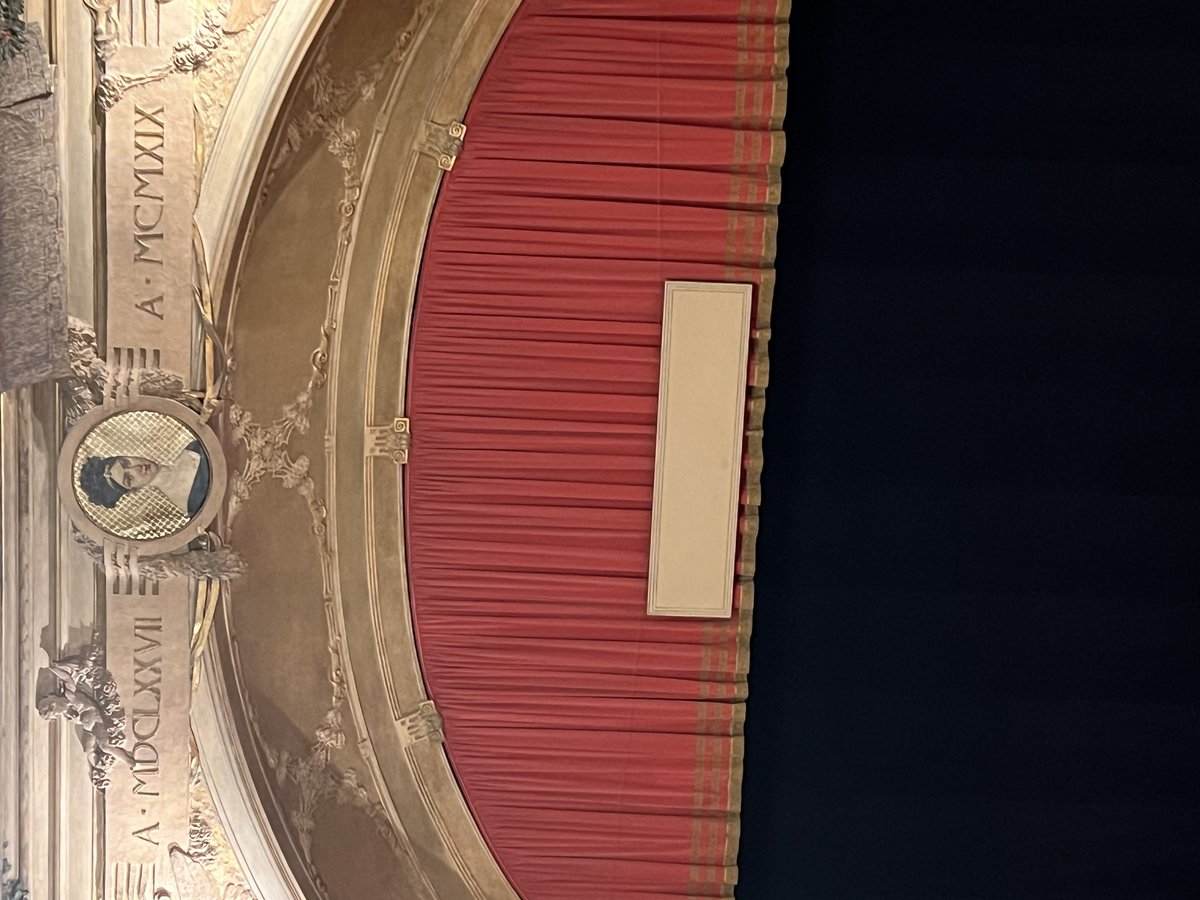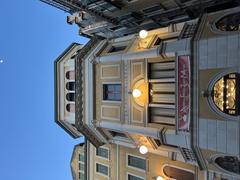
Teatro Malibran Venice: Visiting Hours, Tickets & In-Depth Travel Guide
Date: 14/06/2025
Introduction: Teatro Malibran—Venice’s Historic Opera Gem
Teatro Malibran is one of Venice’s most iconic and historically significant opera houses, renowned for its blend of Baroque grandeur, rich cultural legacy, and ongoing contribution to the city’s artistic life. Founded in 1678 as Teatro San Giovanni Grisostomo by the influential Grimani family, the theater set new standards for luxury and scale in Venice’s vibrant operatic scene (Venice Civic Museums). Built atop Marco Polo’s family home, Teatro Malibran’s horseshoe-shaped auditorium and opulent interiors have been admired for centuries, reflecting Venice’s status as a hub of creativity and social prestige (live-venice.it).
Over the centuries, this storied venue has undergone extensive architectural transformations, balancing the preservation of Baroque and neoclassical features with modern upgrades to stage technology and visitor facilities (La Fenice Official Site). Renamed in 1835 to honor the celebrated Spanish soprano Maria Malibran, the theater remains a beacon of operatic and artistic excellence (Bonjour Venise). Today, it hosts a diverse program of operas, ballets, concerts, and special events, making it a must-visit cultural landmark conveniently located near the Rialto Bridge and other historic Venetian sites (Venice Tourism).
This comprehensive guide offers detailed insights into Teatro Malibran’s history, architectural evolution, cultural significance, visitor information (including tickets, visiting hours, and accessibility), nearby attractions, and practical travel tips—everything you need to plan an unforgettable visit.
Table of Contents
- History and Origins
- Architectural Evolution and Features
- Cultural and Artistic Significance
- Notable Events and Premieres
- Visitor Information: Hours, Tickets & Tips
- Accessibility and Facilities
- Practical Travel Tips & Nearby Attractions
- Frequently Asked Questions (FAQ)
- Conclusion
- Sources
History and Origins
Founding and Early Years
Teatro Malibran began its life as Teatro San Giovanni Grisostomo, inaugurated on October 14, 1678. Under the direction of the Grimani family—prominent Venetian patrons—the theater was designed by architect Tommaso Bezzi and quickly became renowned for its opulence and scale (Venice Civic Museums). With five tiers of boxes and seating for over 900, it was at the forefront of European opera venues, attracting leading composers and performers.
Architectural Layout
The original auditorium featured a horseshoe-shaped design, optimizing sightlines and acoustics—a hallmark of Baroque Italian theaters. Its five tiers of decorated boxes, plush velvet furnishings, and gilded ornamentation offered both visual splendor and social prestige (veneziaopera-tickets.eu). The proscenium and stage machinery allowed for grand, innovative productions.
Architectural Evolution and Features
Transformations Over Time
Teatro Malibran has witnessed multiple renovations reflecting the artistic and technological advances of each era. In the 18th century, renovations adapted the theater for the growing popularity of opera seria, while the 19th century saw the introduction of neoclassical elements, enhanced stage machinery, and significant restoration efforts—especially after being renamed in Maria Malibran’s honor in 1835 (La Fenice Official Site).
A major fire in 1913 led to a comprehensive restoration, preserving the auditorium’s ornate features while updating safety systems. After the 1996 fire at La Fenice, Teatro Malibran served as Venice’s main opera house, prompting further upgrades. The 1992–2001 restoration, led by Aldo Rossi, maintained historical integrity while ensuring modern standards (Venice Civic Museums).
Interior and Decorative Highlights
Visitors can admire lavish interiors: frescoes and stuccoes with allegorical and mythological motifs, gilded moldings, crystal chandeliers, and ornate mirrors. The auditorium’s horseshoe layout fosters intimacy and excellent acoustics, still appreciated today. The theater’s modest façade belies the richness within, enhancing the sense of discovery (alle.travel).
Cultural and Artistic Significance
Operatic and Social Hub
In its heyday, Teatro Malibran was the stage for premieres by composers like Alessandro Scarlatti, Antonio Vivaldi, and Johann Adolf Hasse (Veneto Inside). It was a gathering place for the Venetian elite, especially during Carnival. The 19th-century association with Maria Malibran brought renewed international prestige.
Modern Role
Today, the theater hosts a diverse calendar: opera, ballet, concerts, and experimental performances. Collaborations with institutions like Conservatorio Benedetto Marcello and events like La Biennale di Venezia continue its tradition of artistic innovation (Bonjour Venise).
Notable Events and Premieres
Teatro Malibran has a rich history of world premieres, including Carlo Pallavicino’s “Vespasiano,” and performances by luminaries such as Maria Malibran herself. It has also been the venue for Italian premieres of Rossini and Donizetti operas, and, during La Fenice’s restoration, hosted significant contemporary productions (La Fenice Official Site).
Visitor Information: Hours, Tickets & Tips
Visiting Hours
- General Hours: Open for guided tours Tuesday to Sunday, typically 10:00 AM–5:00 PM; performance days may have different access. Always confirm on the official website.
- Performance Access: The theater opens in line with its event schedule. Check listings for specific timings (Comune di Venezia).
Tickets and Admission
- How to Buy: Purchase tickets online via the Teatro La Fenice website or at the box office. Advance booking is recommended, especially for popular events.
- Prices: Guided tour tickets range from €10–€20, with performance tickets from €20–€120 depending on the event and seating. Discounts may be available for students, seniors, and groups.
- Guided Tours: Available in various languages, including backstage access and historical insights (alle.travel).
Accessibility and Facilities
- Mobility: Recent renovations have improved accessibility, including ramps and some elevators. However, due to the building’s historical layout, some areas may be challenging. Contact the theater ahead for assistance.
- Seating: About 900 seats across five tiers of boxes and a stalls area, with excellent acoustics and sightlines.
- Other Facilities: Cloakroom, restrooms, and limited concessions are available. Photography is permitted during tours but not during performances.
Practical Travel Tips & Nearby Attractions
- Location: Calle Stretta Morosini, 5864, Cannaregio, Venice 30121, Italy (Trek Zone).
- Getting There: Best reached on foot; nearest vaporetto stops are Rialto (Lines 1, 2). From the stop, it’s a 5-minute walk through picturesque Venetian streets (HikersBay).
- Nearby Attractions: Rialto Bridge and Market, Santa Maria dei Miracoli, Palazzo Falier, Jewish Ghetto, and Church of Madonna dell’Orto.
- Dining & Accommodation: Numerous nearby restaurants and hotels, including Hotel Malibran and Charming Palace Corte del Teatro (HikersBay).
- Best Times to Visit: Weekdays, early mornings, or outside peak seasons for a quieter experience.
- Dress Code: Smart casual is recommended; formal attire for gala events.
- Weather: Be mindful of acqua alta (high tides) in autumn/winter.
Frequently Asked Questions (FAQ)
Q: Does Teatro Malibran have regular visiting hours?
A: The theater is open for scheduled performances and guided tours. Confirm hours on the official website.
Q: How do I buy tickets?
A: Online via the Teatro La Fenice website, by phone at +39 041 2424, or at the box office.
Q: Is Teatro Malibran accessible for visitors with disabilities?
A: Yes, there are accessibility improvements, but some historic areas may present challenges. Contact ahead for accommodations.
Q: Are guided tours available?
A: Yes, in multiple languages. Check availability and book in advance.
Q: What are nearby historical sites?
A: Rialto Bridge, Santa Maria dei Miracoli, Jewish Ghetto, and local Venetian canals.
Conclusion
Teatro Malibran stands as a magnificent testament to Venice’s operatic and cultural heritage, blending centuries of history with ongoing artistic innovation. Whether you attend a performance or explore its ornate architecture on a guided tour, the theater offers a profound connection to Venice’s artistic past and present. For the latest updates on events, tickets, and visiting hours, consult the Teatro La Fenice website and the Venice Tourism portal.
Enhance your visit by downloading the Audiala app for curated guides, exclusive content, and event updates. Don’t forget to follow us on social media and explore related articles on Venice’s historical and cultural landmarks.













































































































